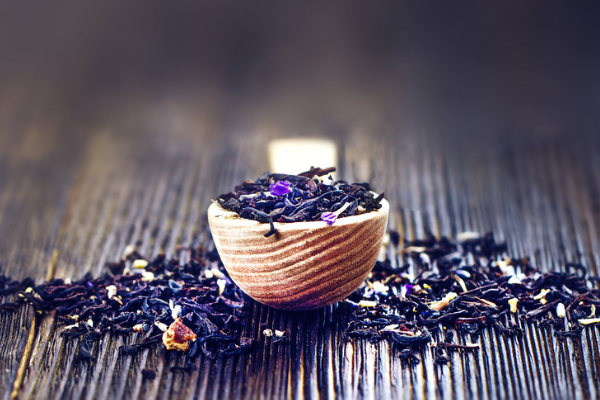how to make herbal tea infusions
In the realm of beverages, few things are as comforting and versatile as a steeping a cup of herbal tea with herbs from your garden. Beyond its soothing qualities and delightful aroma, herbal tea offers a myriad of health benefits and flavor profiles that cater to every palate. One of the most enjoyable ways to experience herbal tea is through infusions, where dried or fresh herbs and spices are steeped in hot water to extract their essence fully. Let’s dive into the world of herbal tea infusions and discover how you can elevate your tea-drinking experience and make your own herbal infusions with herbs from your garden.
DISCLOSURE: THIS POST MAY CONTAIN AFFILIATE LINKS, MEANING I GET A COMMISSION IF YOU DECIDE TO MAKE A PURCHASE THROUGH MY LINKS, AT NO COST TO YOU. PLEASE READ MY TERMS OF USE POLICY FOR MORE INFO.
What Makes Herbal Tea Infusions Special?
Herbal tea infusions differ from regular tea in that they don’t contain actual tea leaves (Camellia sinensis). Instead, they are crafted from a diverse array of dried flowers, fruits, roots, and leaves, each chosen for its unique properties, nutrients and flavors. The variety of ingredients that can be used allows tea enthusiasts to explore endless combinations and health benefits without the caffeine found in traditional teas, making herbal infusions a perfect choice for any time of day and can be enjoyed hot or cold.
Health Benefits of Herbal Tea Infusions
Beyond their delightful taste, herbal tea infusions are renowned for their health benefits. Different herbs offer various therapeutic properties, ranging from calming effects to immune-boosting qualities and digestive aid. For instance, chamomile is celebrated for its calming effects, making it an excellent choice before bedtime, while peppermint can soothe an upset stomach and aid digestion after a meal. Ginger and turmeric infusions are prized for their anti-inflammatory properties, ideal for supporting overall wellness.
Exploring Flavor Profiles
One of the joys of herbal tea infusions lies in the vast spectrum of flavors available. From the sweet and floral notes of lavender, the zing of hibiscus to the earthy richness of chaga and the refreshing energizing “zest” of lemongrass, each infusion offers a unique sensory experience. Mixing different herbs allows for endless experimentation, letting you create custom blends that suit your taste preferences and mood and what you are growing in the garden.
How to Prepare Herbal Tea Infusions
Preparing herbal tea infusions is a simple yet rewarding process. Here’s a basic guide to get you started:
1. Boil Fresh Water: Heat fresh, filtered water to just below boiling point (around 200°F or 93°C).
2. Choose Your Herbs: Select your desired herbs or herbal blend. Use about 1 teaspoon of dried herbs or ¼ cup of fresh herbs, per cup of water, adjusting to taste.
3. Steep: Place the herbs in a teapot or infuser and pour the hot water over them. Cover and let steep for 5 to 10 minutes, depending on the herbs and desired strength.
4. Strain and Serve: Once steeped to your liking, strain the herbs and pour the infusion into your favorite mug. You can sweeten with honey or add a slice of lemon if desired.
5. Enjoy: Savor the flavors and take a moment to appreciate the soothing comfort and nourishment of your herbal tea infusion.
Whether you’re looking to unwind after a long day, boost your immune system, or simply explore new flavors, herbal tea infusions offer a delightful and healthful alternative to traditional teas. With their wide range of flavors and therapeutic benefits, there’s an herbal infusion to suit every taste and occasion. Embrace the art of herbal tea infusions and discover a world of wellness and flavor in every sip.
Enhancing your tea experience is effortless with a loose leaf tea infuser. Since discovering this convenient method, I find myself brewing herbal infusions more frequently than ever. It's become a straightforward part of my self-care routine, and I appreciate how enjoying these teas keeps me hydrated and refreshed. With each sip, I indulge in the soothing flavors and therapeutic benefits of my garden-fresh blends.
So, next time you reach for a beverage, consider the simple pleasure and profound benefits of a carefully crafted herbal tea infusion. Your taste buds—and your well being—will thank you.
Herbs to consider growing in your garden:
Anise hyssop
Basil (try cinnamon basil!
Butterfly pea flower
Beebalm
Bergamont
Calendula
Catnip
Corn Silk
Chamomile
Chokecherry
Dandelion
Echinacea
Epasote
Elderflower/ Elderberry
Fennel
Ginger
Gogi berry
Jasmine
Jamaica/Roselle Hibiscus
Lavender
Lemon balm
Lemongrass
Licorice root
Marshmallow root
Milk thistle
Mint (peppermint, spearmint, try pineapple mint!)
Mullein
Nettle
Oregano
Passionflower
Raspberry leaf
Red clover
Rose (petals or hips)
Rosemary
Sage
Sassafras
Sumac
Slippery elm
St. John's wort
Thyme
Turmeric
Valerian
Violet
Yarrow
Yellow dock







